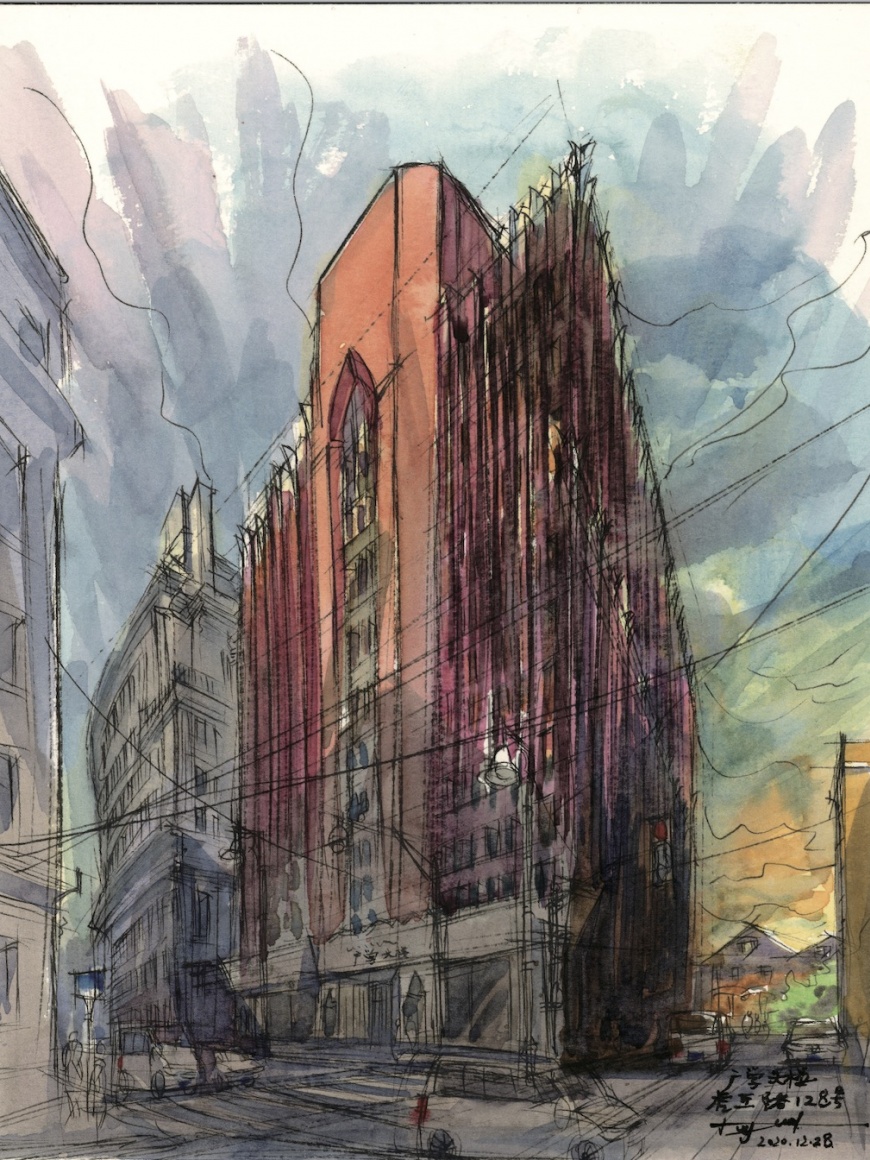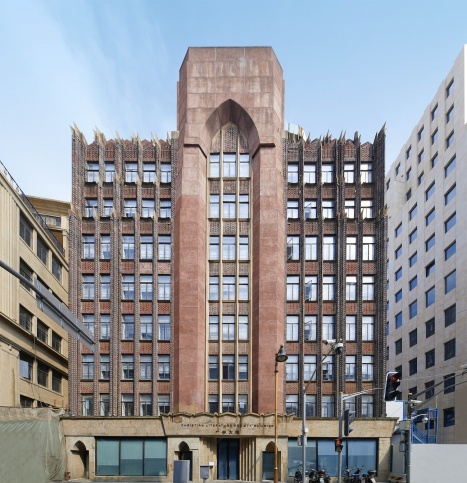LOCATION No.128 Huqiu Road
Type Historical
The Christian Literature Society Building faces west, and the exterior walls are reddish-brown and milky-yellow, which are said to be Hudec's favorite colors. The large glass windows and the protruding walls are alternately concave and convex, showing various details on the facades.

The Christian Literature Society Building was built by the Christian Literature Society, a Christian cultural organization. In 1887, a group of missionaries, businessmen, and diplomats from the United Kingdom and the United States founded the Christian Literature Society in Shanghai. At that time, the Christian Literature Society gathered bureaucrats and social elites and spread the seeds of modern Western knowledge and ideas in China, which played a great role in altering the social landscape of China.
At the end of the 19th century, Emperor Guangxu advocated a political reform movement aimed at learning from the West and optimizing national politics, commerce, and education, and this movement evolved into the "Hundred Movement Reform Movement”. At that time, Emperor Guangxu purchased 129 books introducing new Western learning, 89 of which were from the Christian Literature Society. The influence of the Christian Literature Society even penetrated into the imperial examination system: the books and periodicals it published became reference books or textbooks for examinations, enlightening thousands of Chinese intellectuals. Although the Reform Movement of 1898 ended in failure, Chinese intellectuals did not stop learning modern science and thought, and countless latecomers armed with knowledge pushed China into modern civilization step by step.
On May 18, 1932, the inauguration ceremony of the Christian Literature Society Building was held. Mo Anren, then chairman of the Christian Literature Society, placed a commemorative stone plaque in the southwest corner of the building which was engraved with “Founded in 1887 for the Diffusion of Christian and General Knowledge among Chinese.”, indicating the consistent purpose of the Christian Literature Society, and the names of Mo Anren and architect Hudec were also engraved on it. The guests who delivered speeches at the ceremony also included: Lee Teng-hui, the president of Fudan University; Bu Fangji, the president of St. John's University; and Mrs. Ji Lifei, the director-general who presided over the construction of the Christian Literature Society Building.
In 1932, after the Christian Literature Society settled in this building, the building became an important academic center and continued to play the important role of disseminating modern science and ideas. Although the Christian Literature Society Building and the China Baptist Publication Building were both well-known because of the fame of their designer Hudec, the cultural connotation hidden in them and their subtle influence on Chinese society were far beyond what people actually know today.
Architectural watercolor painting by: Lu Jun



